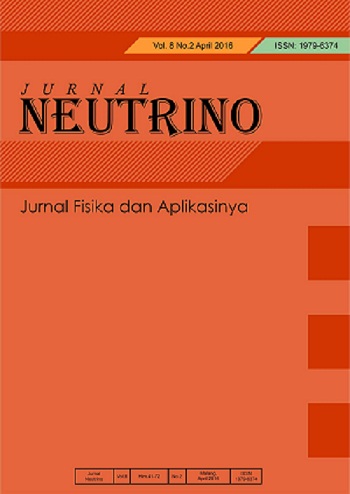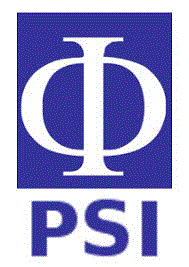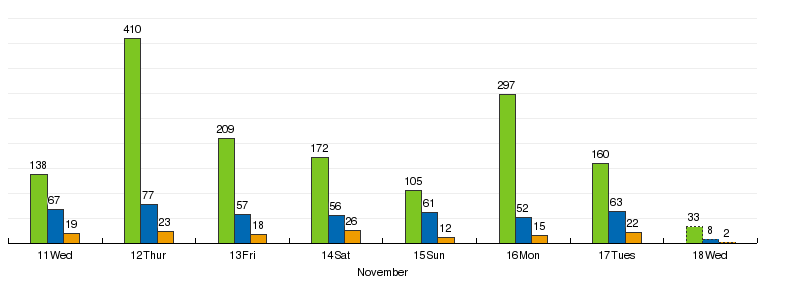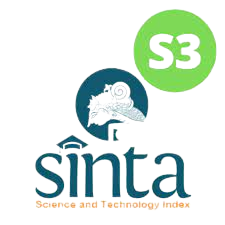WATER HYACINTH (EICHHORNIA CRASSIPES) MODIFIED CITRIC ACID AS A METAL ADSORBENT IN LABORATORY LIQUID WASTE
Abstract
The cellulose content in water hyacinth (Eichhornia crassipes) shows potential as an adsorbent medium in the management of heavy metal waste generated from laboratory activities. Water hyacinth (Eichhornia crassipes) contains 60% cellulose which is rich in hydroxyl groups so that it can interact with metal ion adsorbate components. Water hyacinth adsorbent was modified using citric acid and its functional groups (carboxyl, hydroxyl, and lactone) were analyzed using Boehm titration. The modified adsorbent was applied to laboratory waste and the levels of copper (Cu), Chromium (Cr) and Cadmium (Cd) were analyzed using Atomic Absorption Spectrophotometry. Water hyacinth adsorbent was characterized using a Fourier Transform Infrared spectrometer to determine the active groups in the adsorbent. The FTIR results of the modified adsorbent showed that there was an absorption peak of the C=O ester group at wave numbers 1733-1734 cm-1 indicating an esterification reaction between cellulose and citric acid. Adsorption of chromium and cadmium metals had the highest percentage reduction at a dose of 2 grams of 98% and 37.40%, while for copper metal at a dose of 1.5 grams of adsorbent was 63.34%.
Keywords
Full Text:
PDFReferences
Ghorpade A, Ahammed MM. Water Treatment Sludge For Removal Of Heavy Metals From Electroplating Wastewater. Environ Eng Res. 2018;23(1):92–8.
Tran TK, Leu HJ, Chiu KF, Lin CY. Electrochemical Treatment of Heavy Metal-containing Wastewater with the Removal of COD and Heavy Metal Ions. J Chinese Chem Soc. 2017;64(5):493–502.
Karman SB, Diah SZM, Gebeshuber IC. Raw Materials Synthesis from Heavy Metal Industry Effluents with Bioremediation and Phytomining:A Biomimetic Resource Management Approach. Adv Mater Sci Eng. 2014;2014.
Rajeev Arora. Adsorption of Heavy Metals–A Review. Mater Todays Proceeding. 2019;18 part 7:Pages 4745-4750.
Afroze S, Sen TK. A Review on Heavy Metal Ions and Dye Adsorption.pdf. Water, Air, Soil Pollut. 2018;229(225):1–50.
Murithi G, Onindo CO, Wambu EW, Muthakia GK. Removal of Cadmium(II) Ions from Water by Adsorption using Water Hyacinth (Eichhornia crassipes) Biomass. BioResources. 2014;9(2):3613–31.
Istirokhatun T, Rokhati N, Rachmawaty R, Meriyani M, Priyanto S, Susanto H. Cellulose isolation from tropical water hyacinth for membrane preparation. Procedia Environ Sci [Internet]. 2015 [cited 2022 Apr 2]; 23(Ictcred 2014):274–81. Available from:http://dx.doi.org/10.1016/j.proenv.2015.01.041
Bezerra RDS, Teixeira PRS, Teixeira ASNM, Eiras C, Osajima JA, Filho ECS. Chemical functionalization of cellulosic materials — main reactions and applications in the contaminants removal of aqueous medium. Cellul - Fundam Asp Curr Trends. 2015
Bourrie BCT, Willing BP, Cotter PD. The microbiota and health promoting characteristics of the fermented beverage kefir. Front Microbiol. 2016;7(5):647.
Azhari, M., Saleh C. YB. Utilization of water hyacinth powder (eicchornia crassipes) activated with a dip bag system as an adsorbent adsorbent for cadmium metal ions (Cd). At J. 2017;02(2):197–203.
Carneiro MT, Barros AZB, Morais AIS, Carvalho Melo ALF, Bezerra RDS, Osajima JA, et al. Application of water hyacinth biomass (eichhornia crassipes) as an adsorbent for methylene blue dye from aqueous medium: kinetic and isothermal study. Polymers (Basel). 2022;14(13)
Rakhmania CD, Khaeronnisa I, Ismuyanto B, Juliananda, Himma NF. Adsorpsi ion kalsium menggunakan biomassa eceng gondok (eichhornia crassipes) diregenerasi HCl. J Rekayasa Bahan Alam dan Energi Berkelanjutan. 2017;1(1):197–203.
Agustina S, Kurniasih Y. Pembuatan Kitosan Dari Cangkang Udang Dan Aplikasinya Sebagai Adsorben Untuk Menurunkan Kadar Logam Cu. Semin Nas FMIPA UNDIKSHA III. 2013;365–72.
Eny Yulianti, Rif’atul Mahmudah, Ainul Ma’rifah. Adsorpsi Logam Ni dan Cu pada Limbah Cair Laboratorium Kimia menggunakan Biosorben Batang Jagung Termodifikasi Asam Sitrat. Alchemy J Chem. 2019;1–7.
Chen S, Yue Q, Gao B, Li Q, Xu X. Removal of Cr(VI) from aqueous solution using modified corn stalks: Characteristic, equilibrium, kinetic and thermodynamic study. Chem Eng J [Internet]. 2011 [cited 2022 Apr 22]; 168(2):909–17. Available from: http://dx.doi.org/10.1016/j.cej.2011.01.063
Lacaran JVT, Narceda RJ, Bilo JA V., Leaño JL. Citric acid crosslinked nanofibrillated cellulose from banana (Musa acuminata x balbisiana) pseudostem for adsorption of Pb2+ and Cu2+ in aqueous solutions. Cellul Chem Technol. 2021;55(3–4):403–15.
Leyva-Ramos R, Landin-Rodriguez LE, Leyva-Ramos S, Medellin-Castillo NA. Modification of corncob with citric acid to enhance its capacity for adsorbing cadmium(II) from water solution. Chem Eng J [Internet]. 2012 [cited 2022 Apr 22];180:113–20. Available from: http://dx.doi.org/10.1016/j.cej.2011.11.021
Goertzen SL, Thériault KD, Oickle AM, Tarasuk AC, Andreas HA. Standardization of the boehm titration. Part I. CO2 expulsion and endpoint determination. Carbon N Y. 2010;48(4):1252–61.
Sanmuga Priya E, Senthamil Selvan P. Water hyacinth (Eichhornia crassipes) – An efficient and economic adsorbent for textile effluent treatment – A review. Arab J Chem [Internet]. 2017;10:S3548–58. Available from: http://dx.doi.org/10.1016/j.arabjc.2014.03.002
Adriansyah R, Novta Restiasih E, Meileza N. Biosorpsi Ion Logam Berat Cu(II) Dan Cr(VI) Menggunakan Biosorben Kulit Kopi Terxanthasi. J Pendidik Dan Ilmu Kim. 2018;2(2):114–21.
DOI: https://doi.org/10.18860/neu.v15i2.18275
Refbacks
- There are currently no refbacks.
Copyright (c) 2023 Rifatul Mahmudah, Qumil Lailatu Nabilah, Wida Nuri Ahdiyati

This work is licensed under a Creative Commons Attribution-NonCommercial-ShareAlike 4.0 International License.
Published By:
Program Studi Fisika Fakultas Sains dan Teknologi Universitas Islam Negeri (UIN) Maulana Malik Ibrahim Malang, Indonesia
B.J. Habibie 2nd Floor
Jl. Gajayana No.50 Malang 65144
Telp./Fax.: (0341) 558933
Email: neutrino@uin-malang.ac.id
This work is licensed under a Creative Commons Attribution-NonCommercial-ShareAlike 4.0 International License
View My Stats










